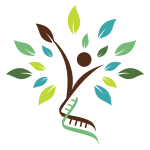From Childhood Moves to Anthropological Insights: Rewriting Our Stories
/Growing up, moving every few years felt like living in a movie where the plot changed just as you got comfortable with the script. Each move brought a new language, a new culture, a new school, new rules—and plenty of awkward moments. Some of them were rough. Like in 4th grade, when I had a long bus ride home every day. One afternoon, the bus started emptying out all at once at a classmate’s house. Turns out, everyone was going to her birthday party—except me. The only one not invited. Ouch. That made for a long, quiet ride home.
By high school, I’d developed a thicker skin, or so I thought. Until the day I walked into the bathroom in the middle of class and saw the mirrors covered in lipstick—a personalized hate letter, with every possible insult imaginable, all for me. Double ouch. High school’s version of a love letter, I suppose.
But while school could be harsh, the neighborhood was my sanctuary. Afternoons and weekends had a different vibe entirely. I remember jumping up and down with friends in a big circle, Devo blasting out of the world’s crappiest tape recorder at someone’s house. We’d walk over in big groups, knowing we’d always be welcomed, no questions asked. And then there was the time a boy sent a mariachi band to my front door. So sweet, right? Except I had a crush on his brother. I was so stunned, I slammed the door in their faces and bolted to my room. Not exactly a moment I’m proud of, but it’s safe to say I wasn’t ready for a serenade.
For a long time, I couldn’t see past the tough moments, the ones that stung. It took years before I could fully appreciate that yes, there was heartache, but there was also a lot of love, connection, and joy. And eventually, with plenty of inner work, I managed to weave those polar experiences together—integrating them instead of letting them define me.
That brings me to my anthropology days. Ah, the '90s—a glorious time for oversized sweaters, when raves with glow sticks and techno beats were our version of a crash course in human connection. Back then, I was deep in my studies, trying to figure out what makes people tick. The real beauty of life happens when we let ourselves dive in, fully immerse, and truly feel. It’s this deep engagement that shifts our perceptions.
I remember being so excited about fieldwork. The idea of going out into the world, meeting people, and challenging all the neat little stories I had in my head about how things worked—that was where the magic happened.
It’s not just about having the answers; it’s about being willing to change your mind. That’s what anthropology taught me. You think you know people, cultures, even yourself, but then you dive in, and everything shifts. That realization, that openness to be wrong, is what brought me back to myself all those years later. What seemed like unchangeable parts of my story—those heartbreaks, the moments of being left out—weren’t the end. They were just one version of the story. There was tons of heartache, sure, but there was also loads of love, connection, and joy.
Fast forward to today, and this is exactly what I bring to my work with clients. We all carry stories about who we are and how the world works. But those stories? They’re not the whole truth. Real transformation happens when we soften our grip on them, get curious, and become willing to change. That’s where the magic is—when we open ourselves to the possibility that there’s more to the story than we’ve allowed ourselves to see.
Here is a journal prompt to explore with: What if you were to revisit a significant story from your past—one that has defined or limited you—and write a new chapter for it? What new insights or perspectives might you uncover if you allowed yourself to expand or reframe this story? Consider how adding new elements or changing the narrative might shift your understanding and open up fresh possibilities.


